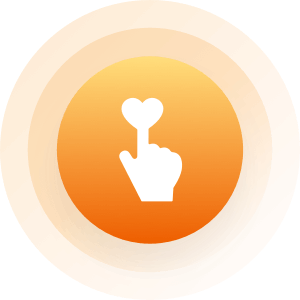| Topic: Brain Study | |
|---|---|
|
Edited by
Tom4Uhere
on
Fri 07/13/18 09:06 AM
|
|
|
Every person has a unique brain anatomy
http://www.sciencedaily.com/releases/2018/07/180710104631.htm Date: July 10, 2018 Source: University of Zurich  Three brain scans (from the front, side and above) of two different brains (pictured on the left and on the right) belonging to twins. The furrows and ridges are different in each person. Credit: Lutz Jaencke, UZH Like with fingerprints, no two people have the same brain anatomy, a study by researchers of the University of Zurich has shown. This uniqueness is the result of a combination of genetic factors and individual life experiences. Experiences make their mark on the brain Professional musicians, golfers or chess players, for example, have particular characteristics in the regions of the brain which they use the most for their skilled activity. However, events of shorter duration can also leave behind traces in the brain. "We suspected that those experiences having an effect on the brain interact with the genetic make-up so that over the course of years every person develops a completely individual brain anatomy." explains Jäncke. I believe this is significant in our quest for a simulated brain technology in the consideration of the futurism notion of mind uploading. It also explains why not all brain disease treatments work the same on all people. The treatment requires specific targeting according to the individual brain. Science fiction enthusiasts have a positive attitude to the digitizing of the brain http://www.sciencedaily.com/releases/2018/07/180712100452.htm Date: July 12, 2018 Source: University of Helsinki The goal of a technology known as mind upload is to make it possible to create functional copies of the human brain on computers. The development of this technology, which involves scanning of the brain and detailed cell-specific emulation, is currently receiving billions in funding. Science fiction enthusiasts express a more positive attitude towards the technology compared to others. "For example, is the potential for conscious experiences transmitted when the brain is copied? Does the digital brain have the ability to feel pain, and is switching off the emulated brain comparable to homicide? And what might potentially everlasting life be like on a digital platform?" Scientific discoveries in the field of brain digitisation and related questions are given consideration in both science fiction and scientific journals in philosophy. Moralities of Intelligent Machines, a research group working at the University of Helsinki, is investigating the subject also from the perspective of moral psychology, in other words mapping out the tendency of ordinary people to either approve of or condemn the use of such technology. The indications of negative links between sexual disgust sensitivity and disapproval of the mind upload technology are surprising, given that, on the face of it, the technology has no relevant association with procreation and mate choice. Digital copies of the human brain can reproduce much like an amoeba, by division, which makes sexuality, one of the founding pillars of humanity, obsolete. "The bold advances in artificial intelligence as well as its increasing prevalence in various aspects of life are raising concern about the ethical and humanistic side of technological applications. Are the ethics of the relevant field of application also taken into consideration when developing and training such systems? The Moralities of Intelligent Machines research group is concentrating on this often forgotten factor of applying technology. The board of the Weisell Foundation considers this type of research important right now when artificial intelligence seems to have become a household phrase among politicians. It's good that the other side of the coin also receives attention." As 'Smart Technology' becomes more and more commonplace in our gadgets, is it immoral to power down/wipe a device with AI technology? Science fiction gives us examples of AI tech in constructs and explores often, one-sided views on that morality. HAL, the AI in the film 2001: A Space Odyssey (1968) looked at that morality biased to the danger to humans. Most people side with the human validation. However, is an AI alive? When the technological singularity happens, not if... when, that AI will surpass human abilities quickly and immensely. Will it be alive even tho it is artificial? Will it have a right to exist? Will the debate be similar to The Bicentennial Man (1999) |
|
|
|
|
|
Now that wine shops have reopened in India It maybe interesting to know how drinking impacts us - peg by peg! Around 105 of Indians (the poor & the bachelors) drink to get stone drunk. Terms: 1 big peg = 60 ml (say whisky) plus 60 ml water or two ice cubes While drinking - no food intake - no chicken wings - smoking is allowed Drinking till one can no longer drink - just sleep --- As I recall, this is what happens First peg (60 ml): Man lights a cigarette - puffs - a sense of relief Explanation: Pre-frontal cortex - the region behind our foreheads which is the seat of discrimination - cognition center of what is right & wrong starts to blink. Second peg: Man opens up - wants to talk not chatter, but talk with a purpose Prefrontal cortex starts to go out Temporal Lobe - the region for speech - kicks in It's like the boss has left the office & now the staff begins to take it easy Third peg: More talk Purpose maybe abandoned for passionate talk It's like some of the start begin to cozy up (not flirt, just closer) Fourth peg: Man becomes a hero Occipital Lobe is blinking - Eyes are red Some men may begin to see boobs - if women are swaying in the vicinity. Typical scene - in Indian movies It's like staff behavior, when boss is not returning back to office. Fifth peg: Speech starts to slur, very slight stagger in movement Woman looks terribly exciting any woman Pre-frontal is already gone; Temporal lobe is blinking Motor cortex is blinking Occipital Lobe is going This leaves the Amygdala region - our emotional center - to look around for whatever brain lobe is remaining. The mid-brain region, commonly referred to as the reptilian brain, is waiting Sixth peg: Generally women don't hang around Indian wine-shops. Assuming on his way back from the wine shop, man comes across a woman. Like a reptile, with a staggering movement, man lurches to grab - generally misses - falls - goes to sleep where he's fallen - on the sidewalk Take away Women need not get scared of a drunk - unless more than one. Ply him with more - then riffle through his pockets. |
|
|
|
|
|
Edited by
Zion
on
Fri 05/15/20 09:59 PM
|
|
|
For the Americans...60ml = 2 ounces.
A shot is normally 1 oz of alcohol so these are considered doubles in the Bartender experience. and I you could say that now I'm on PEG #3 of his explanation. |
|
|
|
|
 I mentioned whisky, fact is we blokes here go for rum, half the price of whisky. Makes the difference between drinking and getting drunk - I suppose |
|
|
|
|
 I mentioned whisky, fact is we blokes here go for rum, half the price of whisky. Makes the difference between drinking and getting drunk - I suppose I'm an equal opportunity drinker... I celebrate all alcoholic cultures... But Rum, Vodka and Anisette head the preferred list... |
|
|
|
|
|
Now that wine shops have reopened in India It maybe interesting to know how drinking impacts us - peg by peg! Around 105 of Indians (the poor & the bachelors) drink to get stone drunk. Terms: 1 big peg = 60 ml (say whisky) plus 60 ml water or two ice cubes While drinking - no food intake - no chicken wings - smoking is allowed Drinking till one can no longer drink - just sleep --- As I recall, this is what happens First peg (60 ml): Man lights a cigarette - puffs - a sense of relief Explanation: Pre-frontal cortex - the region behind our foreheads which is the seat of discrimination - cognition center of what is right & wrong starts to blink. Second peg: Man opens up - wants to talk not chatter, but talk with a purpose Prefrontal cortex starts to go out Temporal Lobe - the region for speech - kicks in It's like the boss has left the office & now the staff begins to take it easy Third peg: More talk Purpose maybe abandoned for passionate talk It's like some of the start begin to cozy up (not flirt, just closer) Fourth peg: Man becomes a hero Occipital Lobe is blinking - Eyes are red Some men may begin to see boobs - if women are swaying in the vicinity. Typical scene - in Indian movies It's like staff behavior, when boss is not returning back to office. Fifth peg: Speech starts to slur, very slight stagger in movement Woman looks terribly exciting any woman Pre-frontal is already gone; Temporal lobe is blinking Motor cortex is blinking Occipital Lobe is going This leaves the Amygdala region - our emotional center - to look around for whatever brain lobe is remaining. The mid-brain region, commonly referred to as the reptilian brain, is waiting Sixth peg: Generally women don't hang around Indian wine-shops. Assuming on his way back from the wine shop, man comes across a woman. Like a reptile, with a staggering movement, man lurches to grab - generally misses - falls - goes to sleep where he's fallen - on the sidewalk Take away Women need not get scared of a drunk - unless more than one. Ply him with more - then riffle through his pockets. |
|
|
|
|










